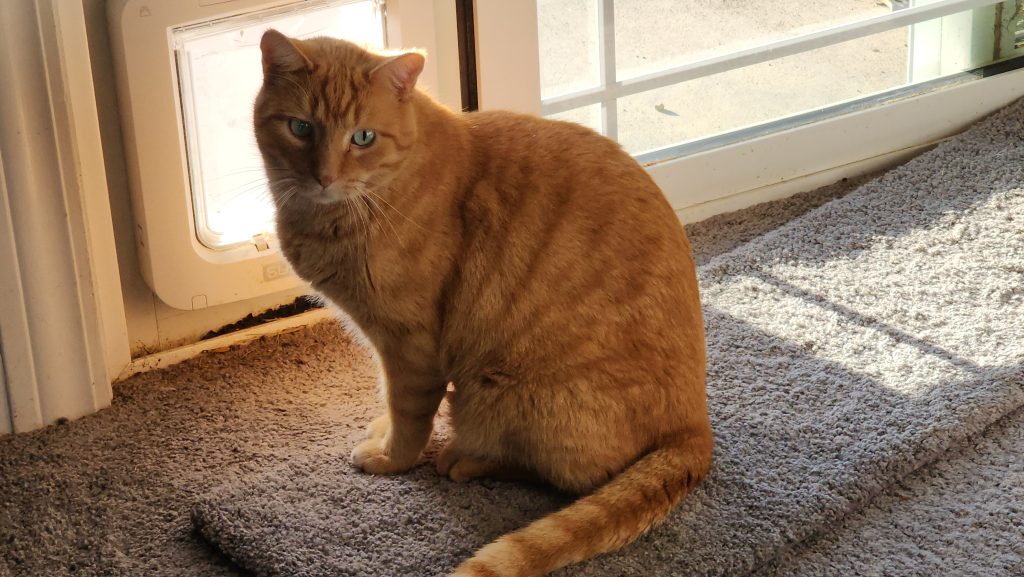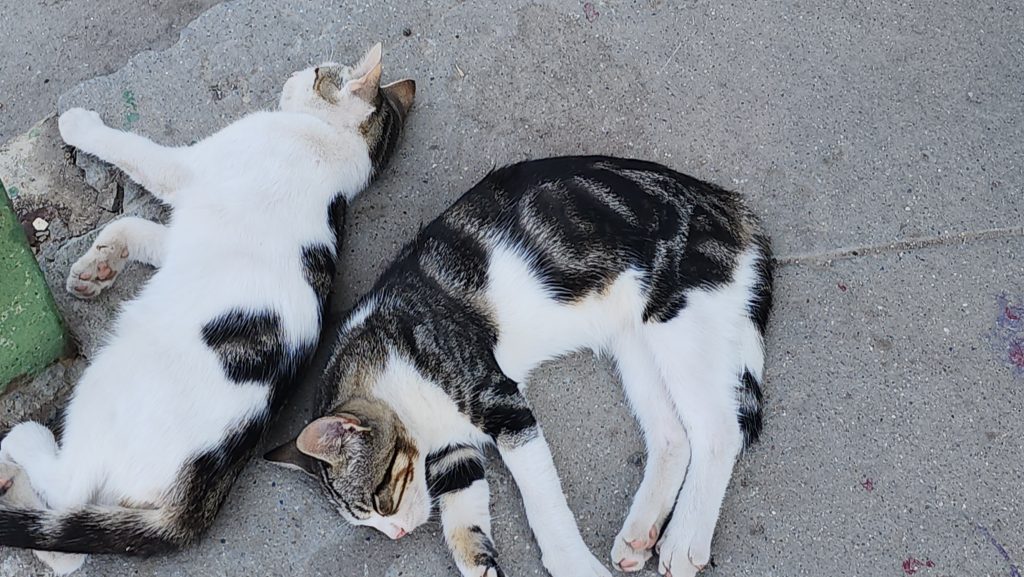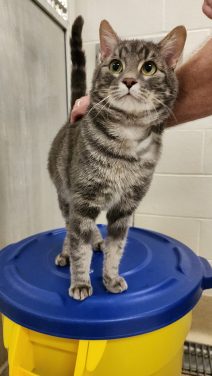Genetic Test for Silver (Inhibitor) Color in Cats – Ordering Instructions and FAQ
- Read the Frequently Asked Questions (FAQ) – below
- Place order – click here: “Genetic Test for Silver (Inhibitor) Color in Cats”
- Watch the video – “How to take a buccal swab from my cat”.
- Take four (4) buccal swabs of each cat
- Print emailed Order Confirmation – attach 4 swabs to each form for each cat.
- Reply to the Order Confirmation
- Attach pictures of each cat
- side image of entire body
- a head/face taken from the front to show coloration and eye color (locket if present).
- Tell us how samples were shipped
- “Samples have been shipped by regular mail (or by courier and include the tracking number)”.
- If you do not live in the USA
- Arrange a courier for package delivery to the USA
- Print “Letter to US Customs” – include inside & outside of package
- Attach pictures of each cat
- Reply to the Order Confirmation
- Submit the Order Confirmation form with 4 attached swabs to:
Feline Genetics Laboratory – SILVER
E109 Vet Med Building, 1520 E. Rollins St.
College of Veterinary Medicine, University of Missouri
Columbia, MO 65211
- The genetic test reports will be sent to the OWNERS EMAIL.
Cat Silver/Inhibitor Test – Frequently Asked Questions
Thank you for your interest in the genetic test for the Silver coat coloration in cats, also known as the Inhibitor locus.
What will the Silver test determine?
The Silver/Inhibitor test will determine if your cat has one or two copies of the DNA variant causing the silver coat coloration. The DNA variant acts dominantly, thus, only one copy is needed to express silver.
Why would I use this test?
Because the DNA mutation causing silver color acts dominantly, a cat could have one or two copies of the mutation, which can’t be determined by the fur color. Some people think cats with 2 copies have less rufousing (redness) in the coat. For cats with two copies, every offspring will be silver and have at least one copy of the variant. Thus, a breeder can predict colorations more reliably and conduct more predictable matings.
Cats that are White, pointed, high white (van) or have other dilution colorations, such as dilution, orange, sunshine, extreme sunshine, can be difficult to determine if they are silver as well. This test will help decipher tricky colorations.
What does the Silver gene (Inhibitor locus) do?
Inhibitor removes all the yellow/red pigment from the hair, known as pheomelanin. The gene does not control the width of the band of the yellow pigment. The resulting color is silver. Silver cats can be smokes (when non-agouti, aa) or have very wide bands (chinchilla) or intermediate band lengths (shaded).
What is meant by the Inhibitor locus?
Inhibitor is the original name for the gene that causes the silver coloration. The gene inhibits pheomelanin production. The word locus implies a position on a chromosome. The word locus is used when the gene is still undetermined. The exact function of the silver DNA variant is not yet known and the gene that is disrupted is not yet determined.
| For example: Dilute = locus name Melanophilin (MLPH) is the gene at the Dilute locus. The coloration caused by Dilute is known as blue / grey when on a black background. Gene names and their loci are written in italics. |
Why is the additional information requested from the cats?
You will notice the form asks you various questions regarding your cat’s physical features, coat colors and more. We would also like pictures and pedigrees of your cats. We are using this service opportunity to gather additional information on cats to help find other genetic causes for eye color or hearing loss or other fun traits or health concerns. Please tell us if your cat has something new and interesting or if you think you have discovered a new health concern. Please provide accurate information. If we discover false information is provided, we will refuse further testing. We understand some information may be unknown.
Why are pictures requested?
We may potentially develop studies for eye color and hearing. The pictures will be used to help determine the cats’ eye color and how much white coloration is present. New studies could develop, such as finding a cause for lockets and belly spots.






The pictures will help us know the test is accurate and further decipher if a potential recessive silver coloration exists. If we discover false information is provided, we will refuse further testing. We understand some information may be unknown.
Why are you asking about behaviors?
We know some behaviors in cats may be inherited, such as response to catnip. Some cats have hoarding behaviors or extreme licking/suckling behaviors. We may be able to develop research projects for these conditions.
How accurate is the test?
*The cat silver (Inhibitor) test is as accurate as any other single gene trait for cats. No genetic test is 100% accurate due to many factors that include owner, genetic, laboratory and assay-based errors. We are trying to determine if a recessive silver condition exists but we have no evidence of this condition as of summer 2024. Some errors have been resolved with resampling and clarification of colorations. This silver test will likely not work on DNA samples that have been degraded or whole genome amplified and will likely be difficult to conduct on a DNA array or by genotyping-by-sequencing (GBS) technologies.
Will other laboratories be able to conduct the test?
Not at this time. We want to understand which gene is involved and if a recessive condition exists before releasing testing information. Gathering data from the public will further help the research. We may ask other laboratories to conduct color testing when colorations are difficult to decipher.
Why is the test so expensive?
Because our laboratory is not specifically a commercial service, we don’t have the general infrastructure and robotics that lower costs for bigger commercial testing laboratories and we only work on one species – cats. We will use any extra proceeds to pay for additional research, such as, is there really a recessive silver and how do the DNA variants affect the production of pheaomelanin? If we discover false information is provided, we will refuse further testing.
Additional funds will not be used to increase Dr. Lyons’ salary. Only 5% of test income may be transferred to the university.
How long until I receive the results?
This is our laboratory’s first effort at a commercial service. Turn around will depend on the volume of testing requests and supply chain. We will not work on holidays or weekends. We are expecting within 2 – 3 weeks.
How is the test conducted?
The silver test is conducted by the Polymerase Chain Reaction (PCR) of the DNA isolated from the cats’ swabs. The PCR amplifies the DNA for the Silver locus. The produced PCR products are size separated by gel electrophoresis (fragment analysis). The different sizes of the PCR products indicate if the cat has a silver mutation.
We welcome any feedback (felinegenome@missouri.edu) to help us with our communications and your understanding of the genetic testing. Please be helpful and KIND with your comments.
Thank you again and remember – cats rule!